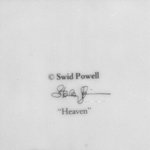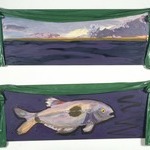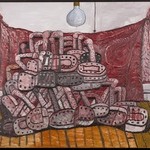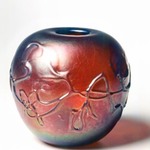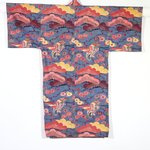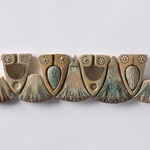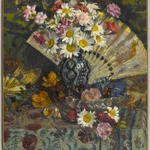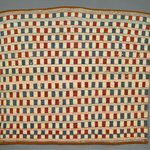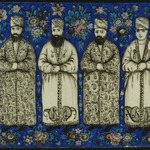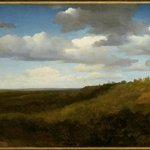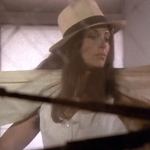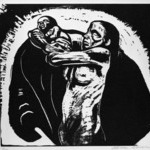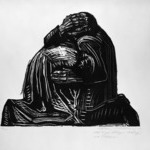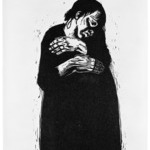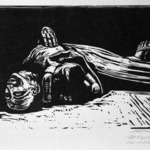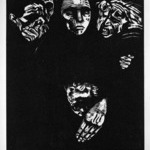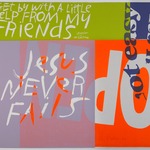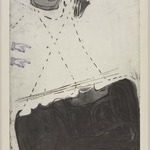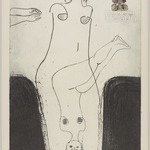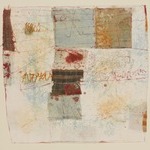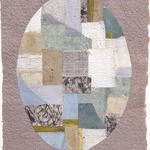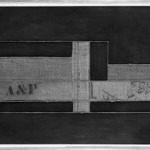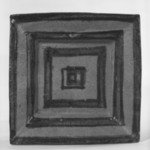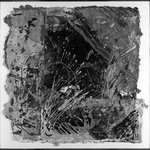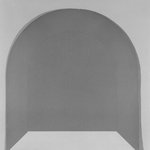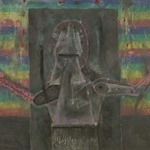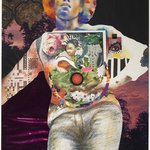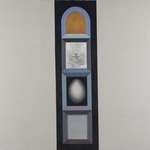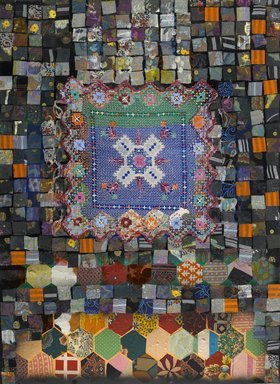
Anonymous was a Woman
Miriam Schapiro
Elizabeth A. Sackler Center for Feminist Art
On View:
Miriam Schapiro’s collages, like those of Taiye Idahor, were created to make connections with women of the past and to rebalance conventional male-dominated narratives. A “femmage” (her term for a feminist collage), Anonymous was a Woman celebrates female textile artists. Its roughly cut lace, cotton, and mesh squares set into acrylic paint evoke patchwork quilts. Only in recent years have museums recognized quilts—made almost exclusively by women, whose names were often unrecorded—as art. In the late 1960s, Schapiro spurned a successful abstract-painting career to explore an oft-neglected corner of art history known as “craft” or, in many cases dismissively, as “women’s work.” Inverting the pejorative term “craft,” her collages put everyday women’s creativity in a place of honor, the museum.
PORTFOLIO/SERIES
From the series #2
MEDIUM
Acrylic and collage on paper
DATES
1976
DIMENSIONS
30 × 22 in. (76.2 × 55.9 cm)
frame: 33 3/4 × 25 3/4 × 1 1/2 in. (85.7 × 65.4 × 3.8 cm) (show scale)



COLLECTIONS
Elizabeth A. Sackler Center for Feminist Art
ACCESSION NUMBER
2005.61
CREDIT LINE
Gift of Amy Wolf and John Hatfield in memory of Cynthia Africano
MUSEUM LOCATION
This item is not on view
CAPTION
Miriam Schapiro (American, 1923–2015). Anonymous was a Woman, 1976. Acrylic and collage on paper, 30 × 22 in. (76.2 × 55.9 cm). Brooklyn Museum, Gift of Amy Wolf and John Hatfield in memory of Cynthia Africano, 2005.61. © artist or artist's estate (Photo: Brooklyn Museum, 2005.61_PS1.jpg)
IMAGE
overall, 2005.61_PS1.jpg. Brooklyn Museum photograph, 2006
"CUR" at the beginning of an image file name means that the image was created by a curatorial staff member. These study images may be digital point-and-shoot photographs, when we don\'t yet have high-quality studio photography, or they may be scans of older negatives, slides, or photographic prints, providing historical documentation of the object.
RIGHTS STATEMENT
© Miriam Schapiro
The Brooklyn Museum holds a non-exclusive license to reproduce images of this work of art from the rights holder named here.
The Museum does not warrant that the use of this work will not infringe on the rights of third parties. It is your responsibility to determine and satisfy copyright or other use restrictions before copying, transmitting, or making other use of protected items beyond that allowed by "fair use," as such term is understood under the United States Copyright Act.
For further information about copyright, we recommend resources at the United States Library of Congress, Cornell University, Copyright and Cultural Institutions: Guidelines for U.S. Libraries, Archives, and Museums, and Copyright Watch.
For more information about the Museum's rights project, including how rights types are assigned, please see our blog posts on copyright.
If you have any information regarding this work and rights to it, please contact copyright@brooklynmuseum.org.
If you wish to contact the rights holder for this work, please email copyright@brooklynmuseum.org and we will assist if we can.
RECORD COMPLETENESS
Not every record you will find here is complete. More information is available for some works than for others, and some entries have been updated more recently. Records are frequently reviewed and revised, and we welcome any additional information you might have.
